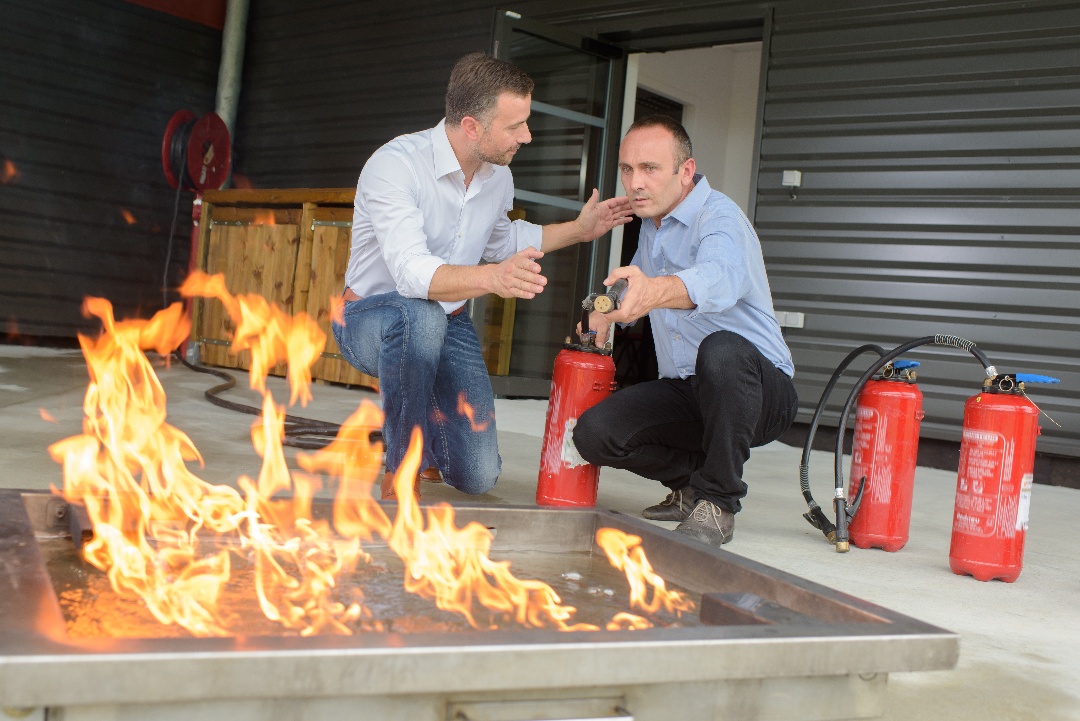Making the Switch: Vendor Transition Guide
Switching fire and security vendors feels risky. Even if your current provider isn't meeting your needs, the thought of transitioning systems and...
 |
Fire protection professionals committed to safeguarding lives, property, and peace of mind. |
 |
Solutions designed for your property type, from multi-family housing to healthcare facilities to retail spaces. |

|
Fire alarm, area of refuge, camera, and card access monitoring services. |
 |
Clear communication and instant response when every second counts. |
 |
From kitchens to server rooms, the right protection for every space. |
 |
Keep your primary defense system ready and reliable. |

|
Manage all your properties' access from one simple platform. |
 |
Monitor multiple properties in real time from anywhere, at any time. |

|
Document upcoming maintenance appointments and improve your proactive budget planning. |
 |
Fire Extinguisher Maintenance Checklist Learn the requirements for testing extinguishers monthly, annually, and beyond. |

|
Track all your inspection deadlines in one place. |
 |
Kitchen Hood Inspection Checklist Ensure your kitchen hoods are safe and compliant. Download a complete list of testing requirements. |

|
Guide to Fire & Security Monitoring Your complete property protection handbook in practical terms. |

|
Running a food truck takes work—this guide gives you the tools to keep it safe and up to code. |
 |
Comprehensive Guide to NFPA 13 and NFPA 25 Fire Sprinkler Systems Navigate sprinkler system requirements with confidence using our straightforward guide to codes and maintenance. |

|
Get your essential compliance guide. |
 |
When reliability matters across 18 restaurants, micromanagement doesn't. |
2 min read
Brothers Fire & Security : January 17, 2025

Most fires start out small enough to be easily put out with a fire extinguisher. Like any lifesaving equipment, portable fire extinguishers must be operable at all times and have people properly trained to operate them. It’s crucial to understand the different types of fire extinguishers and proper maintenance procedures to maintain a safe environment.
Different types of fire extinguishers are suitable for different fire classes. A fire requires three elements: fuel, heat, and oxygen—known as the fire triangle or combustion triangle. Fire extinguishers are designed to eliminate one or more of these elements to put out a fire. Having the right type of fire extinguisher is critical to protecting lives and assets.
Here’s a breakdown of the different types of extinguishers and the classes of fire they’re suitable for.
|
Class of Fire |
Type of Fire Extinguisher to Use |
|
Class A: |
|
|
Class B: |
|
|
Class C: |
|
|
Class D: |
|
|
Class K: |
|
The NFPA 10 requires fire extinguishers to be inspected when they're first installed and visually inspected monthly after that. Anyone knowledgeable about extinguishers can carry out an inspection.
If any of the above conditions are not met, contact a certified fire extinguisher maintenance company for a thorough inspection. They’ll make repairs and replacements wherever necessary. In environments prone to rust, impact, or tampering, more frequent inspections are advisable.
A licensed fire suppression contractor must perform annual inspections. These inspections include:
Unlike the monthly visual inspection, fire extinguisher maintenance needs to be performed by a certified person familiar with NFPA 10 requirements. Maintenance can be conducted once a year or when indicated by an inspection discrepancy.
Fire extinguisher maintenance typically involves:
The maintenance procedures are detailed in the manufacturer’s service manual and must be performed by trained and certified professionals. Brothers Fire & Security Monitoring can assist you with testing, maintaining, and refilling any fire extinguisher. Contact us to figure out the best fire prevention system for your building.
A hydrostatic test involves an internal and external examination of the extinguisher. The extinguisher is stripped down to its shell and filled with water at a specific pressure for a predetermined time to detect any leakage or distortion. Afterward, the extinguisher is drained, dried, and reassembled if it passes the hydrostatic test. Extinguishers that fail the test must be discarded.
The frequency of hydrostatic testing depends on the type of extinguisher you have (typically every six or 12 years). This process must be carried out by trained professionals using proper equipment.
Proper fire extinguisher maintenance isn't just about compliance—it's about ensuring the safety of your people and property. Regular testing, inspections, and maintenance form the foundation of a comprehensive fire safety strategy that protects what matters most to your organization.
Brothers Fire & Security brings decades of experience in fire protection services, ensuring your fire extinguishers and other fire safety equipment meet all current standards and regulations. Our certified professionals deliver comprehensive inspection services, professional maintenance and testing, expert consultation for fire safety planning, and 24/7 emergency support that gives you peace of mind.
Don't wait until an emergency to discover your fire protection equipment isn't properly maintained. Contact Brothers Fire & Security to schedule your professional fire extinguisher inspection and ensure your fire protection systems are ready when you need them most.

Switching fire and security vendors feels risky. Even if your current provider isn't meeting your needs, the thought of transitioning systems and...

Your fire alarm shows a trouble signal. Last week's sprinkler inspection never happened, and despite three calls and multiple messages, your vendor...

Winter weather and holiday demands can make managing multi-location security a nightmare. Fall is your best window to upgrade security systems,...